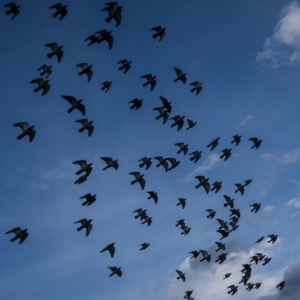 The Evolution of Bird Migration: To an earthbound species like humans, bird migration is nothing short of extreme. A four-ounce Arctic tern can fly to Antarctica and back each year during a lifetime that spans 30 years. Bar-tailed godwits can fly from Alaska to New Zealand in a single nonstop flight that lasts eight days. And hundreds of other species ranging from hawks to hummingbirds routinely perform their own epic migrations.
The Evolution of Bird Migration: To an earthbound species like humans, bird migration is nothing short of extreme. A four-ounce Arctic tern can fly to Antarctica and back each year during a lifetime that spans 30 years. Bar-tailed godwits can fly from Alaska to New Zealand in a single nonstop flight that lasts eight days. And hundreds of other species ranging from hawks to hummingbirds routinely perform their own epic migrations.
Extreme as it may seem to a terrestrial primate like us, migration is for many birds a common-sense reaction to the availability of resources. After all, seasonal change is one of the most dependable features of our planet. It provides predictable resources such as spring leaf-out, monsoon rains, insect hatches, and fruiting seasons. Migrating birds are just following that abundance.
How migration might have evolved, via gradual steps, is a tougher question. One leading theory holds that birds started by making small annual movements as they searched for an edge in feeding or nesting opportunities. Individuals whose movements gave them better chances to survive and reproduce passed that migratory behavior along to their offspring. What at one time might have been a short jaunt to and from a seasonal feeding ground might over time have become exaggerated as climates or resources changed.
A key force in this evolution may have been the earth’s many cycles of environmental change, including, over the last 2.5 million years, more than 20 glacial cycles leading up to the most recent melting and retreat of vast ice sheets about 15,000 years ago. One can imagine that, with every cycle of Pleistocene glaciation, migrants retreated to southern breeding localities and made shorter migrations while the ice ruled the north. Then, when the ice receded, the migrants moved north to take advantage of breeding opportunities in the unoccupied habitat that emerged.
The Continuing Evolution of Migration
In some birds, it’s possible to still see the imprint of past evolutionary forces in their present-day migrations. The northern wheatear—a perky brown songbird with a flashy black-and-white tail—breeds in arctic tundra around the Northern Hemisphere. It was originally a Eurasian species. However, as ice sheets began to recede around 20,000 years ago, the species colonized North America. Colonists came from both directions: from Siberia eastward into Alaska, and from Europe westward across the Atlantic and into Canada.
Would you like to learn more about Migration and Climate Change and more? Click the link here.
Visit the store for birdwatching tools and field guides.
Resources:
“The evolution of bird migration” By Hugh Powell for Princeton University Press



